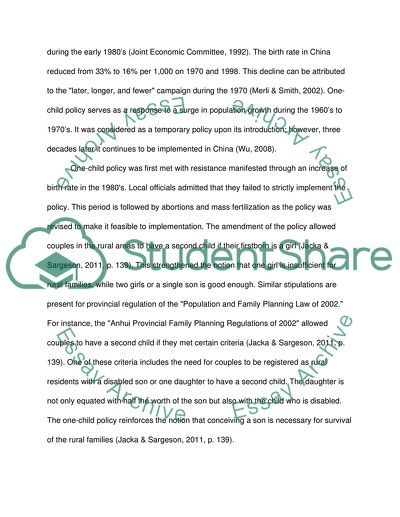Cite this document
(“Chinese Gender Imbalance Research Paper Example | Topics and Well Written Essays - 2000 words”, n.d.)
Chinese Gender Imbalance Research Paper Example | Topics and Well Written Essays - 2000 words. Retrieved from https://studentshare.org/gender-sexual-studies/1437145-chinese-gender-imbalance
Chinese Gender Imbalance Research Paper Example | Topics and Well Written Essays - 2000 words. Retrieved from https://studentshare.org/gender-sexual-studies/1437145-chinese-gender-imbalance
(Chinese Gender Imbalance Research Paper Example | Topics and Well Written Essays - 2000 Words)
Chinese Gender Imbalance Research Paper Example | Topics and Well Written Essays - 2000 Words. https://studentshare.org/gender-sexual-studies/1437145-chinese-gender-imbalance.
Chinese Gender Imbalance Research Paper Example | Topics and Well Written Essays - 2000 Words. https://studentshare.org/gender-sexual-studies/1437145-chinese-gender-imbalance.
“Chinese Gender Imbalance Research Paper Example | Topics and Well Written Essays - 2000 Words”, n.d. https://studentshare.org/gender-sexual-studies/1437145-chinese-gender-imbalance.


